There’s just something unforgettable about stepping onto the grounds of Nymphenburg Palace in Munich. Surrounded by manicured gardens and baroque architecture, I honestly felt like I’d wandered straight into a piece of living history.
Nymphenburg Palace stands as a stunning example of Bavaria’s rich cultural heritage. Sweeping gardens, ornate royal halls, and hidden pavilions make every visit feel a bit magical.
The palace once served as the summer residence for Bavarian royalty. Now, it invites travelers like me to explore its grand rooms and peaceful landscapes.
Whether I wandered past shimmering fountains or poked around secret corners of the gardens, I kept finding new stories waiting to be discovered. Each part of Nymphenburg’s sprawling estate has its own charm.
Every turn here seems to reveal a different side of baroque splendor. Dramatic painted ceilings and lush parkland dotted with charming little buildings keep things interesting.
If you’re even a little curious about Munich’s royal past or just love exploring beautiful, historic places, you’ll probably find plenty to inspire you at Nymphenburg Palace.
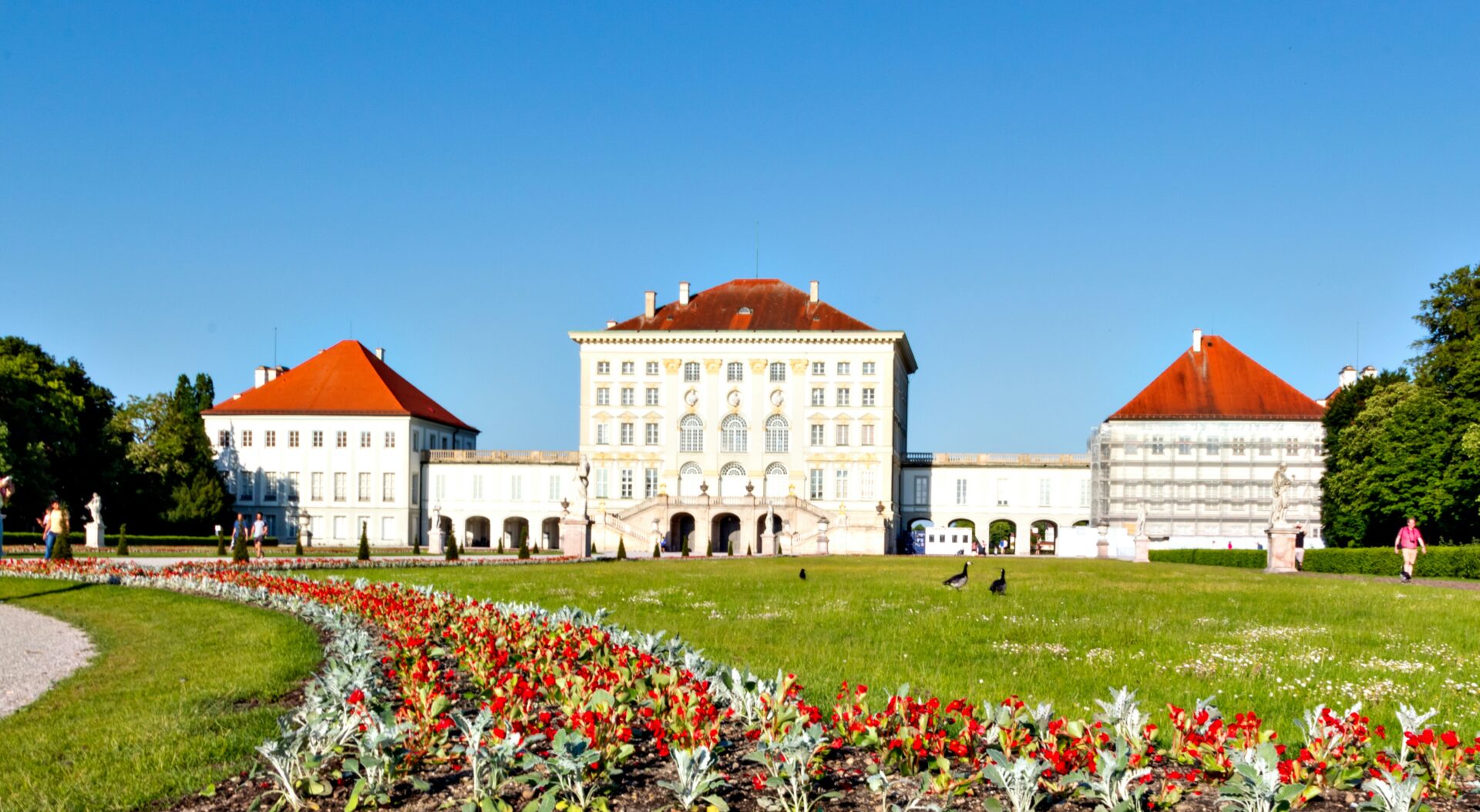
The Story of Nymphenburg Palace: Royal Legacy & Timeless Grandeur
As I walked through Schloss Nymphenburg in Munich, I saw more than just incredible rooms and pretty gardens. I glimpsed centuries of Bavarian history—its roots, powerful residents, and its role as a royal home are woven into every stone and hall.
Origins, Construction, and Historical Significance
Nymphenburg Palace started as a dream of Elector Ferdinand Maria and his wife, Henriette Adelaide of Savoy, back in the 17th century. They wanted a peaceful summer retreat outside the busy city.
The first building phase kicked off in 1664, guided by architect Agostino Barelli. By 1679, the initial palace was complete.
This place stands as a classic example of Baroque architecture, with bold shapes and a grand sense of drama. Over time, each generation added their own style, blending the original Baroque with Rococo and Neoclassical touches.
Its gardens stretch over 200 hectares—pretty canals and pavilions are tucked away for anyone who loves to explore. Nymphenburg wasn’t just a pretty summer destination; it symbolized Bavaria’s growing power and vision during the late 1600s and beyond.
Important royal events, including births and celebrations, happened within these halls. That connection to Munich’s dynastic story felt almost tangible as I wandered through.
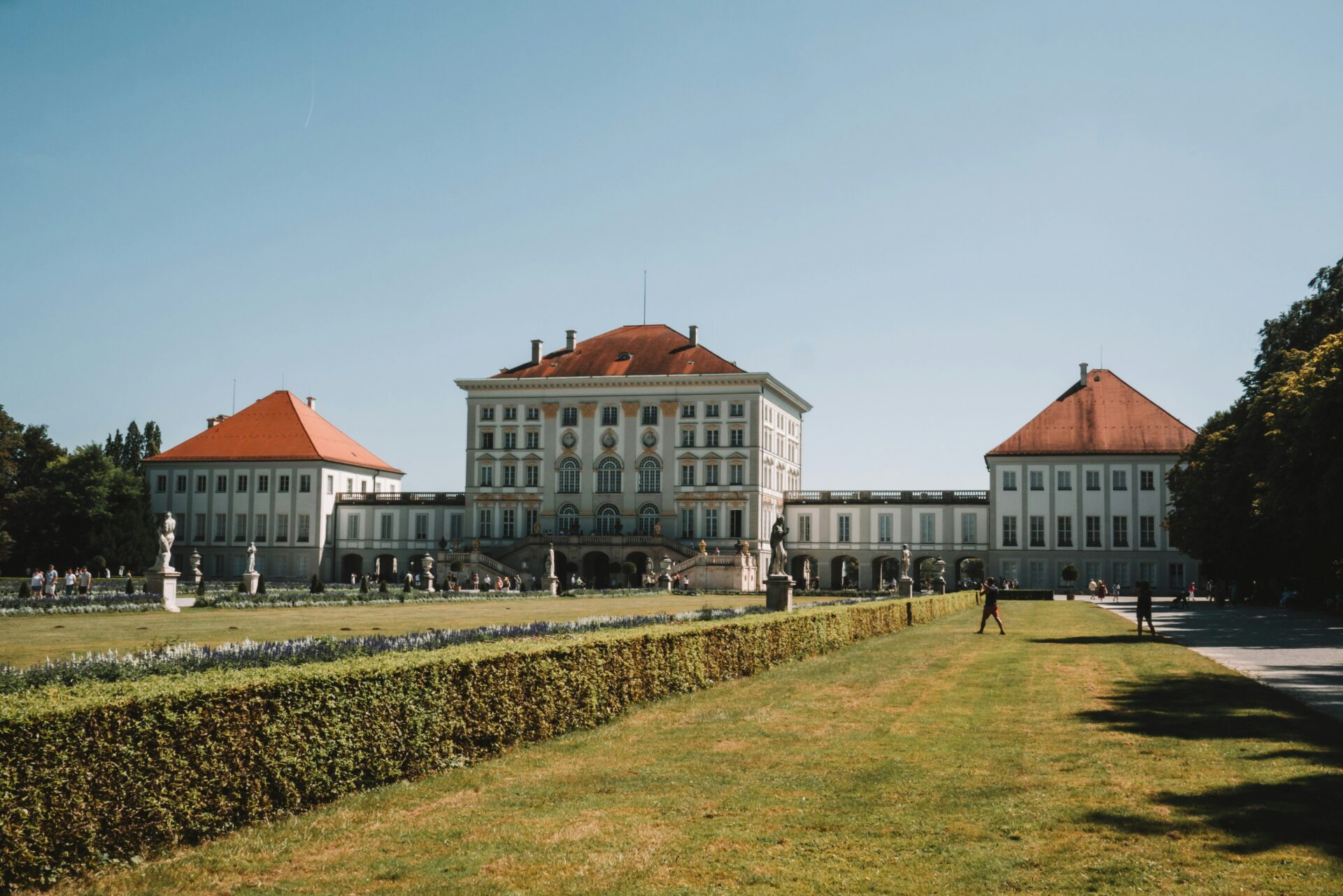
Ferdinand Maria, Max Emanuel, and the Bavarian Royal Family
Ferdinand Maria really wanted to secure the future of the Bavarian dynasty. After more than a decade of marriage, he and Henriette Adelaide finally welcomed their son, Max Emanuel, in 1662.
They built the palace as a heartfelt gift to celebrate this long-awaited heir. It made history from the very beginning.
Max Emanuel grew up here and played a huge role in expanding and shaping Nymphenburg. Under his direction, architect Joseph Effner and others extended the palace and designed those elaborate gardens.
Max Emanuel’s love for European art and culture still shows in the decoration, pavilions, and grand halls. The palace remained home to the Bavarian rulers and their families for generations.
The famous Ludwig II, known as the “Fairytale King,” was born here too. I couldn’t help but imagine royal family life—their celebrations, strategies, and even daily routines echo in the palace corridors.
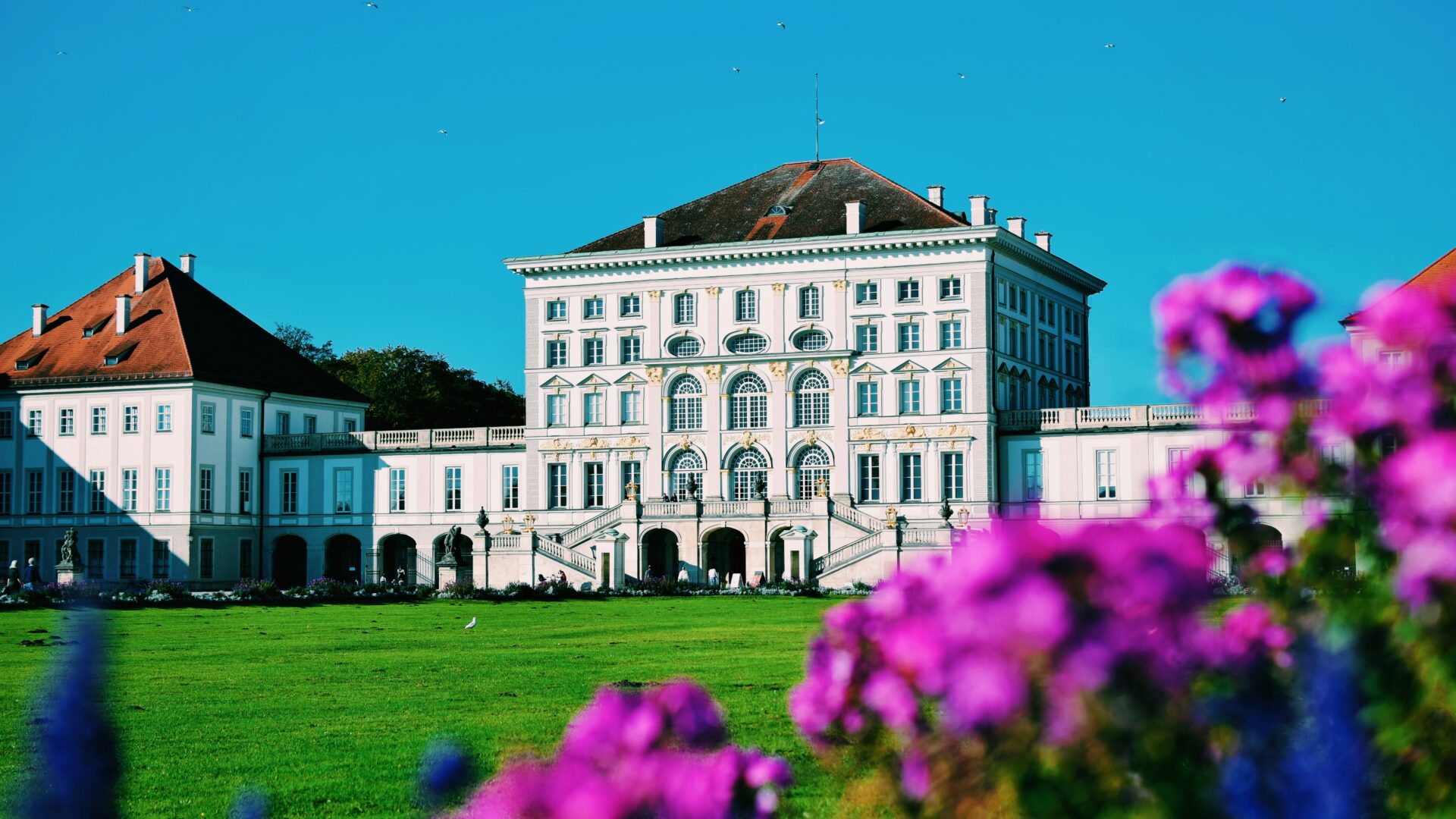
Nymphenburg Palace Through the Ages
As centuries passed, Nymphenburg changed alongside Bavaria. It survived wars, shifting governments, and even modernization. In each era, caretakers maintained and redecorated the palace, keeping it beautiful and relevant.
Different rulers left their mark. Friedrich Ludwig Sckell, for example, reshaped the gardens in the English landscape style, creating serene lakes and peaceful walking paths.
These areas offer quiet spots for travelers like me and reveal the changing tastes of the Bavarian elite. Today, Nymphenburg stands not just as a museum, but as a living memory of Munich’s royal past.
Every fresco, hall, and garden path tells a story about those who built, lived in, and preserved this Baroque masterpiece for the next curious visitor.

Marveling at Opulence: Palace Interiors and Royal Treasures
Walking into Nymphenburg Palace, I felt as if I’d stepped into another era packed with Baroque artistry, gilded ceilings, and dazzling royal treasures. Each room seems to have its own story, from soaring halls to delicate portraits.
I got a real sense of how Bavaria’s royals lived amid so much beauty and luxury.
Steinerner Saal: The Stone Hall’s Baroque Splendor
The moment I entered the Steinerner Saal—the Stone Hall—I had to just stop and look around. This great hall sits at the heart of Nymphenburg Palace and immediately draws your eyes upward with its dramatic ceiling frescoes.
The artwork floods the space with color and detail, celebrating gods, muses, and Bavarian history. Below, marble columns and lavish stuccoes frame the room.
Golden accents top everything. My gaze darted from the sparkling chandeliers to the painted balustrades.
The sheer scale and decor made me understand why the Stone Hall still hosts grand balls and events. I could almost picture royals and dignitaries sweeping through during celebrations.
Highlights of the Steinerner Saal:
| Feature | Description |
|---|---|
| Ceiling Fresco | Mythology, vivid colors, painted by Zimmermann |
| Marble Columns | White-gray stone, elegant Baroque shapes |
| Chandeliers | Crystal, candle-lit, original 18th century |
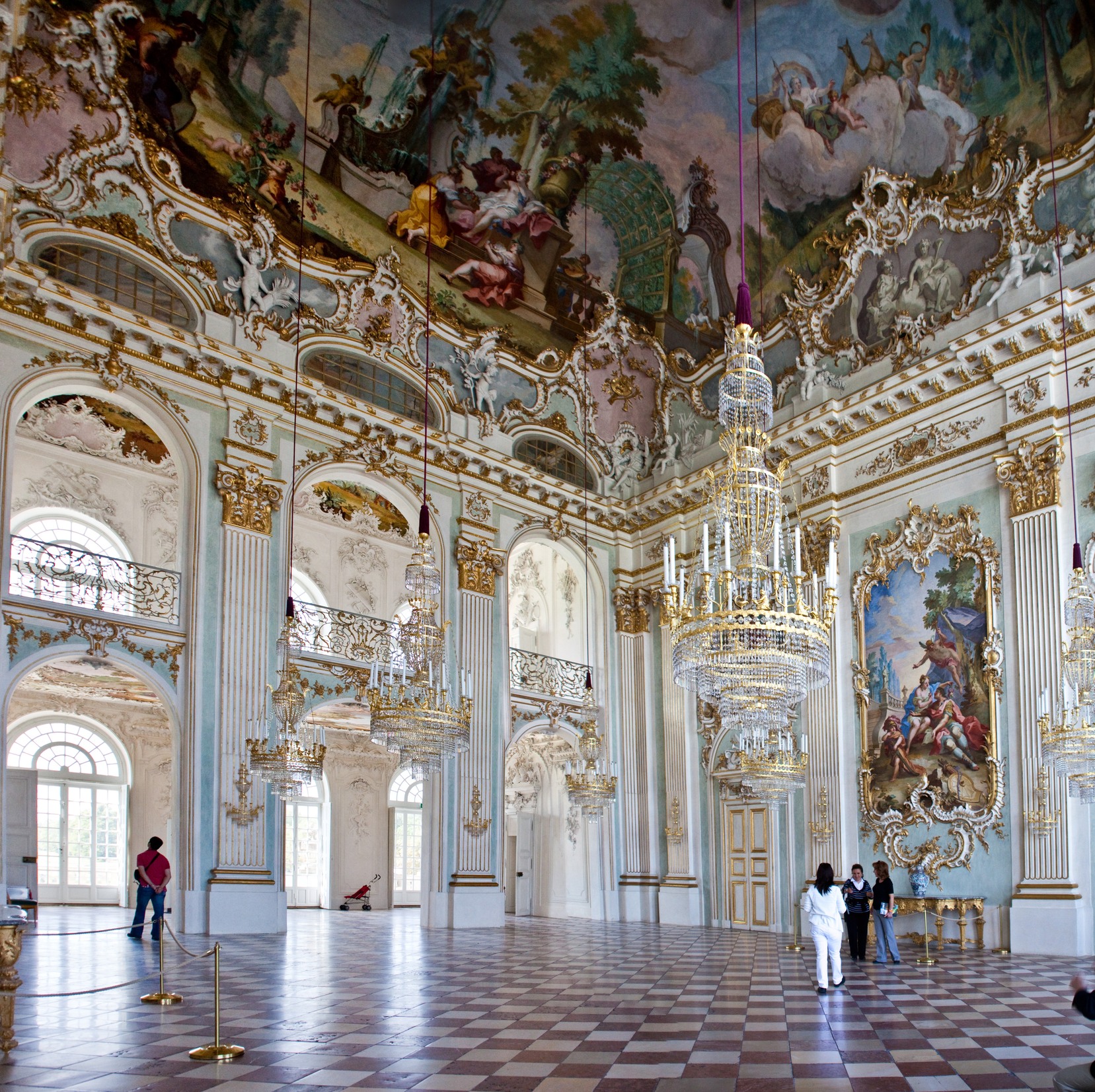
The Gallery of Beauties and kann Schönheitengalerie
Turning a corner on the upper floor, I suddenly found myself face-to-face with some of the most famous portraits in Munich—the Gallery of Beauties or Schönheitengalerie. Joseph Stieler painted these in the 19th century for King Ludwig I.
This room lines its walls with portraits of beautiful women from all walks of life. There’s not just royal charm here; Stieler’s subjects ranged from noblewomen to a shoemaker’s daughter.
Each portrait includes intricate details, like delicate jewelry or subtle fabrics, and offers a glimpse into the styles and society of that era. I moved slowly from frame to frame, curious about the stories behind each face.
The Gallery of Beauties isn’t just about appearance. It’s about showing individual stories and the king’s fascination with personality and presence.
This room became a highlight for me—a spot where history felt close and very personal.
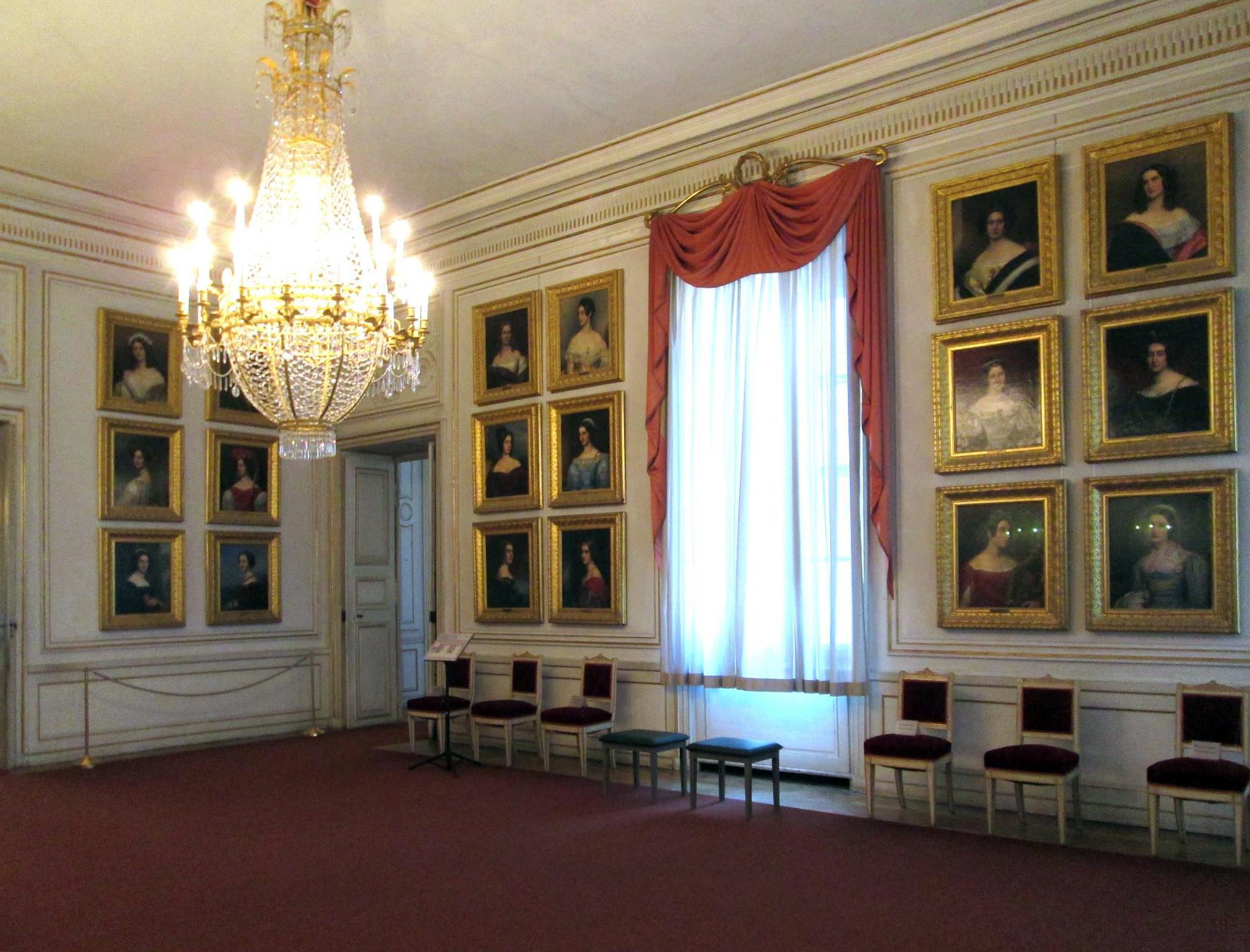
Royal Apartments: Lavish Rooms and Ornate Furniture
Exploring the royal apartments, I discovered what real opulence actually feels like. Every chamber features ornate furniture glinting with gold.
Walls are dressed in rich tapestries, and parquet floors creak softly underfoot. I paused to admire rococo style details—floral carvings in wood, playful wall reliefs, and painted ceilings with soft-pastel backgrounds.
Gilded mirrors catch the sunlight, making each room look airy and grand. Here’s what stood out most to me:
- Royal Beds: Sumptuous, layered in velvet and silk.
- Tapestries: Historical scenes and soft textures along the walls.
- Secret Cabinets: Hidden compartments and intricate marquetry.
It was easy to imagine royal family members discussing state matters or relaxing with music amid such beauty.
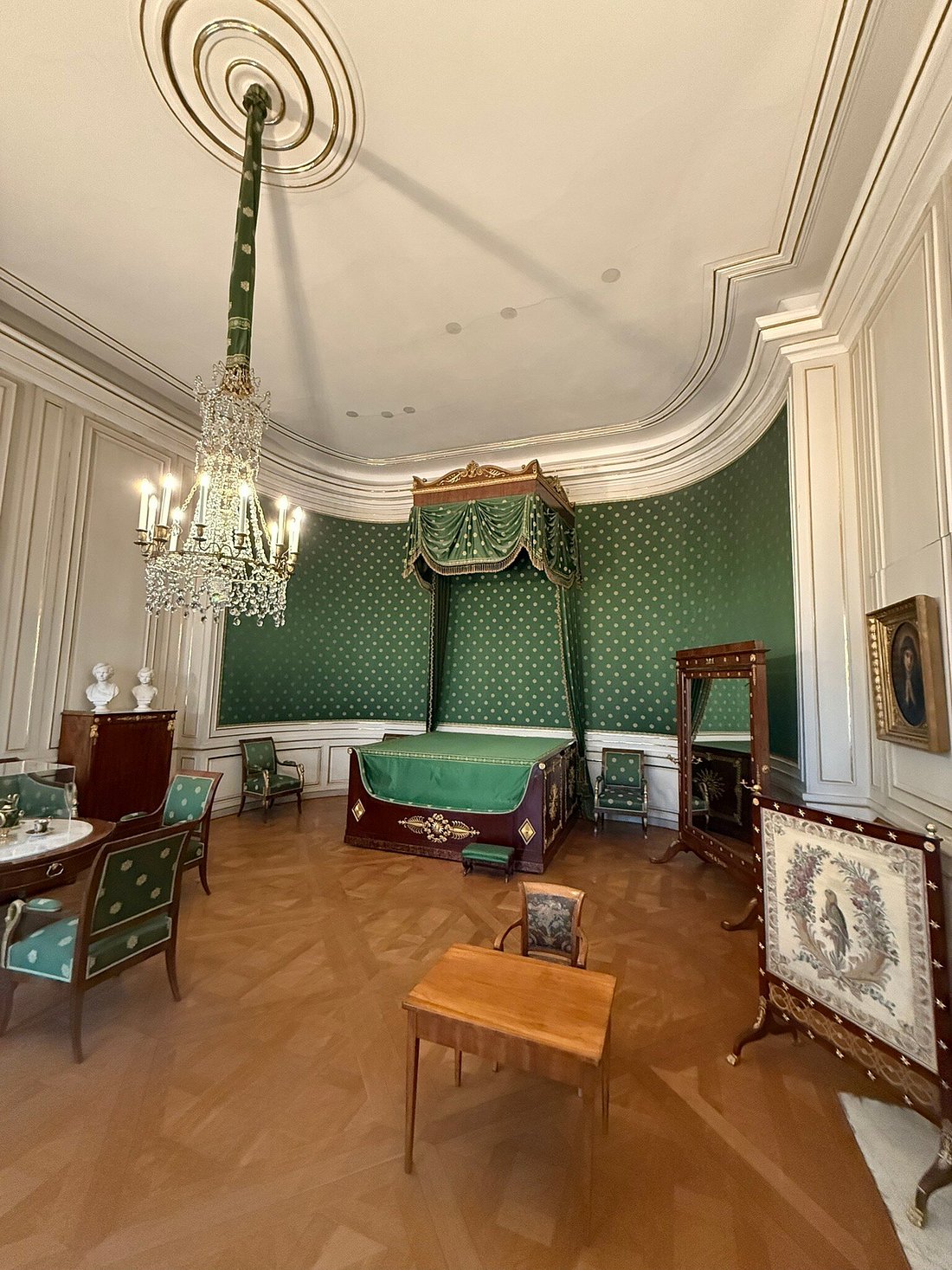
Queen Caroline and the Queen’s Bedchamber
Of all the rooms, the Queen’s bedchamber had a distinct charm. This space, once belonging to Queen Caroline, was both elegant and intimate.
I noticed the color palette first: muted pinks, creams, and golds set a gentle, warm tone. Her four-poster bed looked surprisingly modest among the palace’s splendor, but the surrounding ornate furniture and embroidered textiles added a royal touch.
Delicate floral patterns showed up everywhere—from silk drapes to painted furniture panels. A particularly special piece was her personal writing desk, which sat by the window.
It offered a little glimpse into Caroline’s day-to-day life. For me, this room felt less formal and more personal—a rare peek at the private world behind all the royal ceremony.
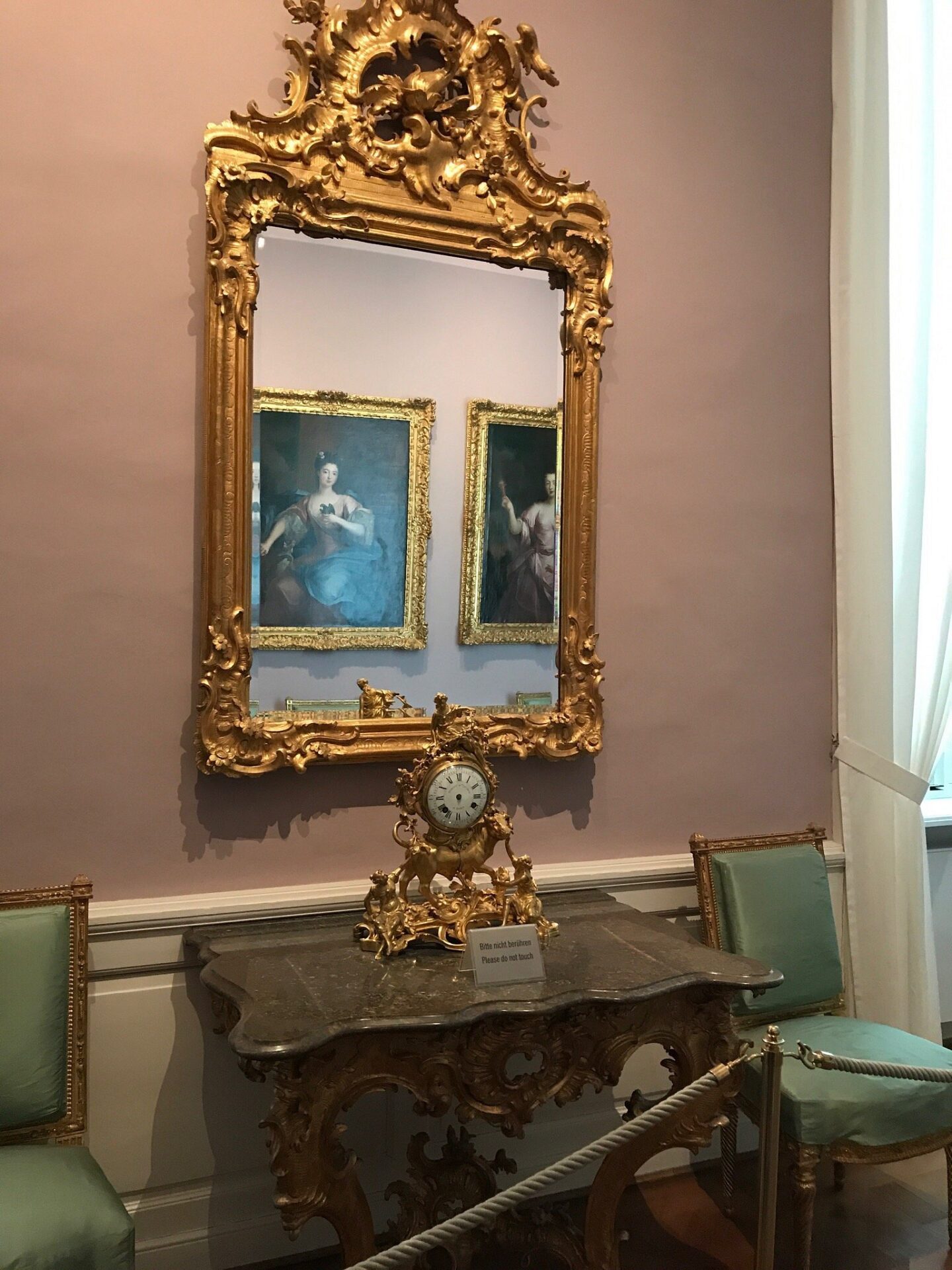
Wandering the Palace Complex: My Grand Stroll Through Gardens and Park Pavilions
Nymphenburg Palace offers much more than royal halls. The huge park feels like a living part of Munich, alive with calm lakes, historic pavilions, and gardens that seem to stretch on forever.
Stunning Palace Gardens and Green Spaces
Stepping into the palace gardens, I was greeted by perfect symmetry and color. The formal French lawns in front of the main building are lined with neat rows of trees, statues, and flower beds that change with the seasons.
In spring, the gardens burst into color. Summer brings thick green lawns where locals picnic or read beneath shady trees.
Just beyond the geometric layouts, the paths twist into a more natural, English-style park. Old woods and wild meadows offer a peaceful break from central Munich.
I loved seeing families, joggers, and couples strolling past classic statues and the famous Temple of Apollo. It’s a quiet spot—great for photos or just taking in the view.
Nymphenburg Park stands as one of the largest green spaces in Munich. There’s plenty of room to spread out, making it easy to find a quiet patch even on busy days.
Each season gives the gardens a new look—fresh blossoms in spring, golden leaves in fall, and a wintry stillness after snow.

Charming Pavilions: Amalienburg, Badenburg, Pagodenburg, and Magdalenenklause
Scattered across the park, the unique pavilions—also called park palaces—pull you deeper into royal history. My favorite, Amalienburg, stands out with its bright blue-and-white Rococo decorations and mirrored Hall of Mirrors.
It’s easy to see why it served as a hunting lodge. Nearby, the Badenburg impressed me with its grand swimming hall.
Dating back to the 18th century, it’s one of Europe’s earliest indoor pools. Across the lawns, the Pagodenburg draws inspiration from Chinese themes, with colorful tiles and a peaceful, sunlit interior.
One of the quieter stops, the Magdalenenklause, feels completely different. With its rustic, chapel-like rooms and shell-decorated walls, it was built as a place for private retreat.
Discovering each pavilion, I felt like I’d stepped into different stories from Bavaria’s past.
| Pavilion | Main Features | Best For |
|---|---|---|
| Amalienburg | Rococo décor, Hall of Mirrors | Art lovers, photos |
| Badenburg | Early indoor pool, bathhouse | History buffs |
| Pagodenburg | Asian themes, tiled interior | Peaceful moments |
| Magdalenenklause | Rustic retreat, shell walls | Quiet reflection |
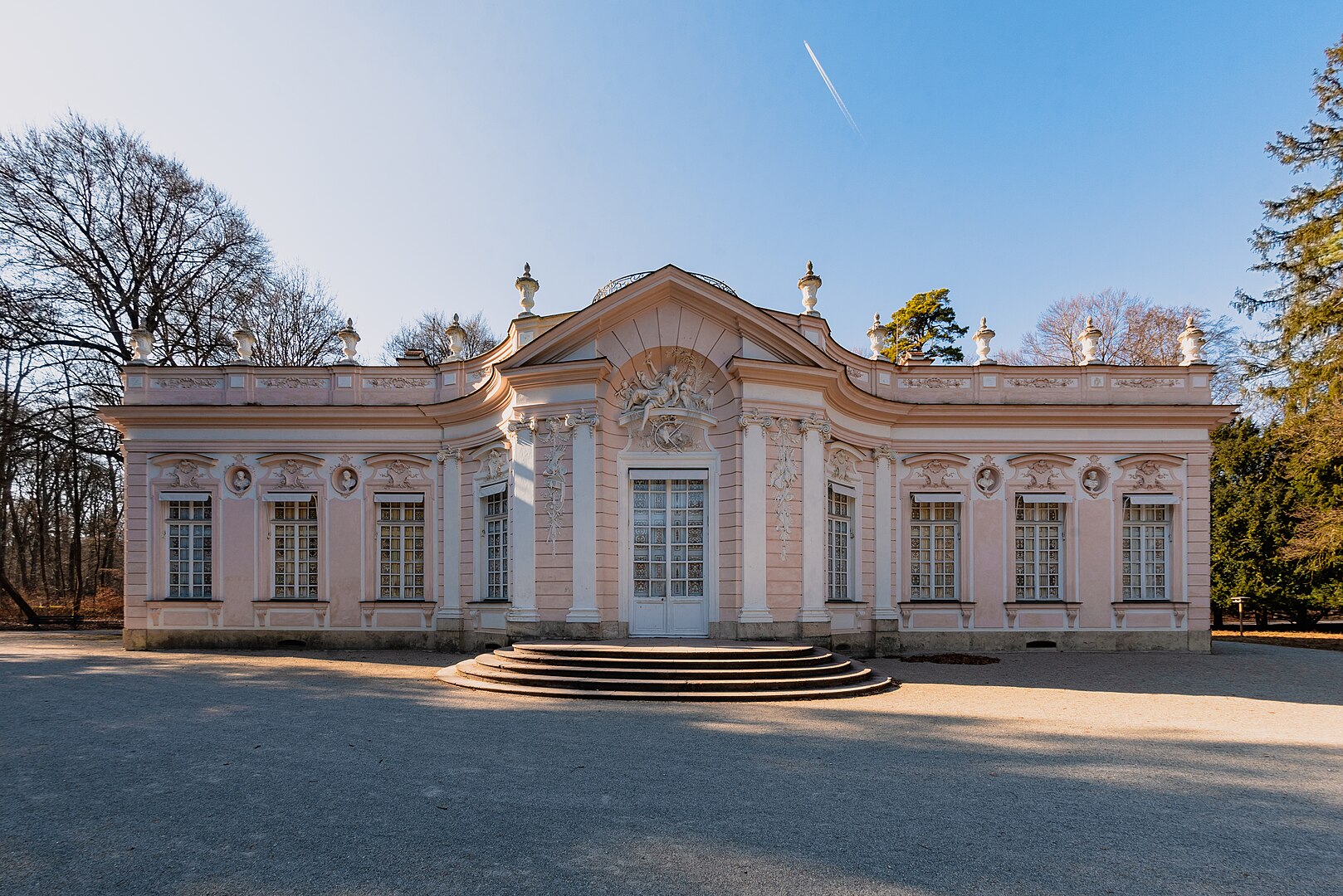
Lakes, Water Features, and the Tranquil Canal
Water is everywhere in Nymphenburg Park. The long central canal starts at the palace steps and flows toward the city, reflecting the palace towers perfectly.
Swans glide elegantly by—watching them is almost meditative. Deeper into the park, I found small lakes bordered by shady paths and gentle lawns.
Wooden benches nearby make for relaxed picnic stops. Waterways connect the canal to these lakes, and in warmer months, you’ll see dragonflies and ducks sharing the space with visitors.
The gentle sounds from the bubbling water features and quiet ponds add to the sense of tranquility. Whether it’s winter, when mist hovers over the lakes, or summer, with sunlight sparkling on the water, these features make the park feel like a peaceful escape in Munich.
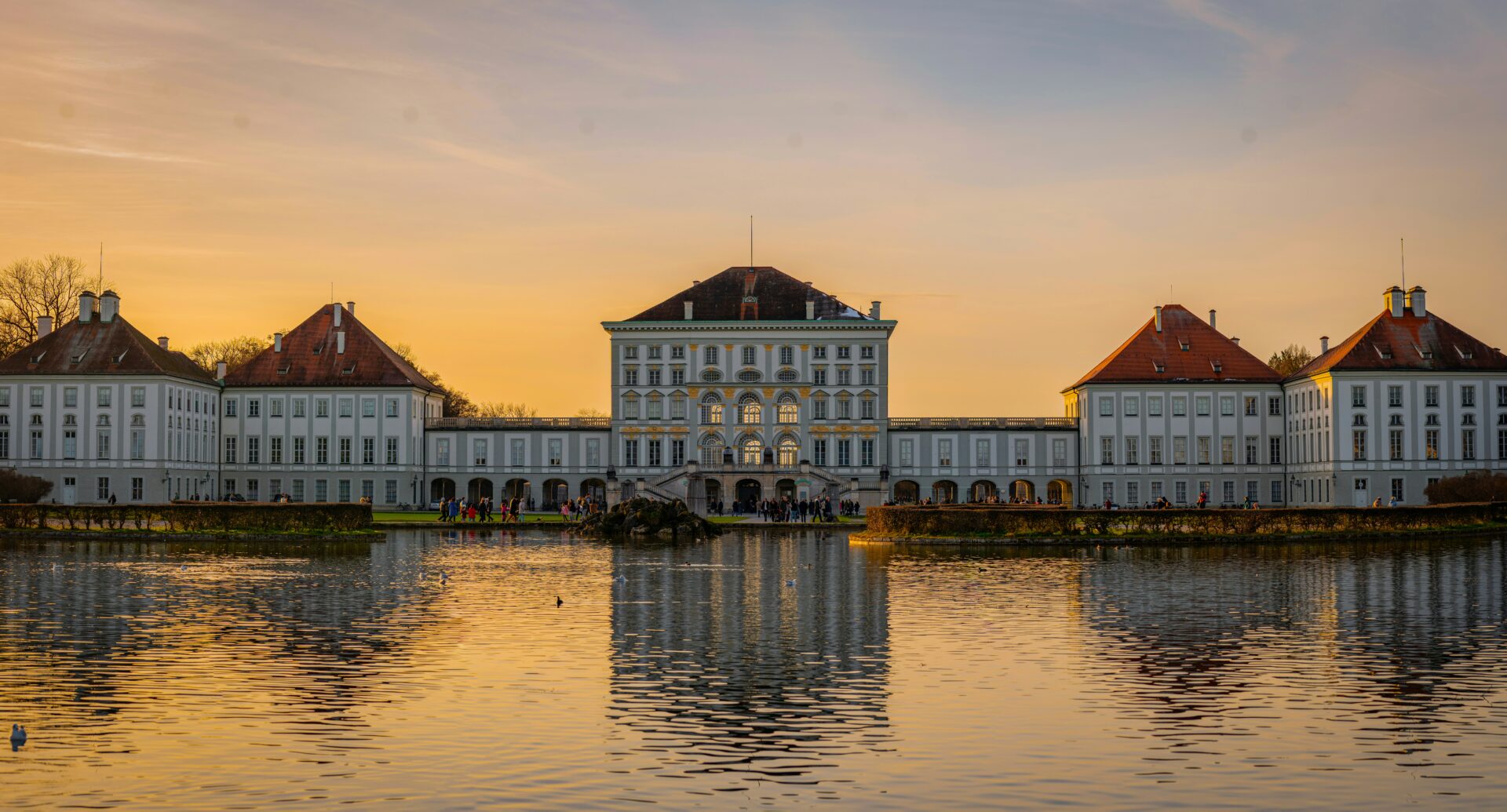
Museums and Hidden Gems: Discovering Nymphenburg’s Cultural Riches
Behind Nymphenburg’s grand façade, I found a collection of museums, unique royal artifacts, and hidden surprises tucked into quiet corners. The palace isn’t just halls and gardens—it’s packed with stories and rare finds, from handmade porcelain to glittering royal carriages.
Nymphenburg Porcelain Museum and Manufactory
One wing of the palace houses the Nymphenburg Porcelain Museum. When I first walked in, delicate, hand-painted porcelain surrounded me—some pieces were tiny, others big enough to take over a whole dinner table.
Nymphenburg’s porcelain manufactory has been around since 1747, and it’s still going strong. I got to watch artisans shape and paint each piece by hand, keeping those old traditions alive. Their work really shows off Bavarian skill, from elegant dishes to detailed figurines.
What really caught my eye? You can get surprisingly close to the porcelain. Some of the best pieces shine with gold, bright floral patterns, or scenes from palace life. Short videos play throughout, showing how they make the porcelain, which makes the museum both beautiful and pretty educational.

Marstallmuseum: Royal Coaches and Coronation Carriages
Tucked away in the old stables, the Marstallmuseum shows off a lineup of royal coaches, sleighs, and the famous coronation carriage. Honestly, it felt like I’d stepped straight into a history book—each coach looked even more decorated than the last.
The Grand Coronation Coach steals the show, covered in gold leaf and royal emblems. Carriages used by King Ludwig II and Empress Elisabeth (“Sisi”) sit nearby, with velvet seats and painted panels. I even spotted tiny children’s carriages and hunting sleighs with carved animals.
Plaques next to each vehicle share quick facts about when and how they were used. I liked that you don’t just see how royalty traveled—you get a peek into old celebrations and parades too. They let you take photos, so I snapped plenty.
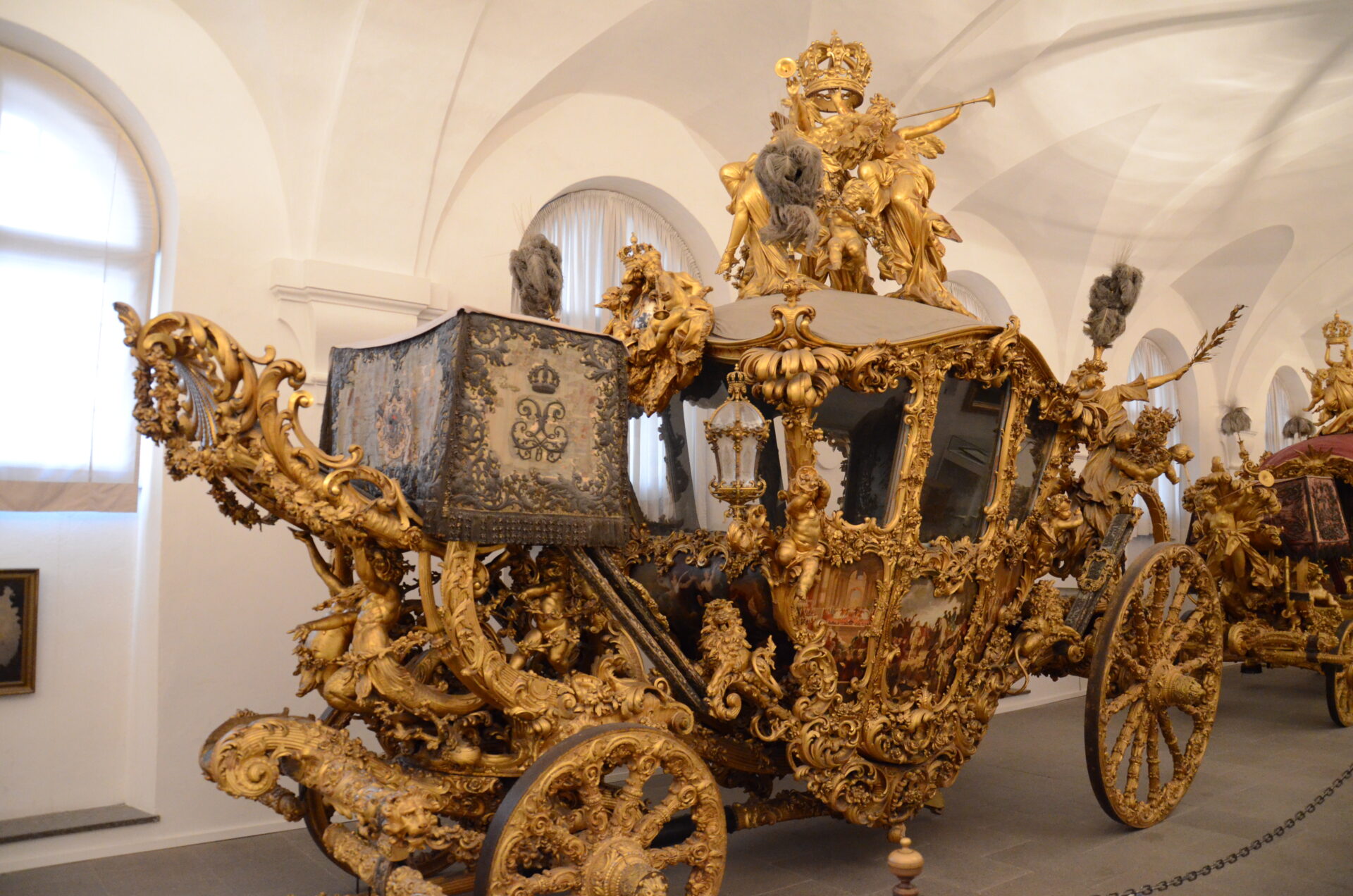
Secret Rooms and Lesser-Known Treasures
If you wander past the main galleries, you’ll find some quieter corners that most people skip. Hidden rooms display rare timepieces, 18th-century furniture, and artwork you won’t see in the main halls. One tucked-away spot holds early Bavarian coins and medals, giving you a glimpse into royal daily life.
Scattered through Nymphenburg’s huge gardens, you’ll spot pavilions like the Amalienburg hunting lodge, each with its own character. My favorite surprise was stumbling into a gallery full of delicate glasswork and odd porcelain animals.
Take your time and let curiosity lead you—it’s easy to discover unexpected treasures. I’d suggest asking staff for tips; they pointed me to rooms I never would’ve found, like a tiny salon lined with portraits, far from the usual crowds.

Planning the Perfect Visit: Practical Travel Tips and Local Insights
Planning a trip to Nymphenburg Palace takes a bit of thought—tickets, transport, comfy shoes, and what else is in the area. I’ve picked up a few tips that made my own visit smoother and a lot more fun.
Opening Hours, Tickets, and Entry Fees
Nymphenburg Palace usually opens around 9:00 AM, so you can enjoy a peaceful morning before the crowds roll in. The palace, museum wings, and park buildings all have different hours, especially in winter, so I always check the official website before heading out.
Entry fees depend on how much you want to see. You can buy a ticket just for the palace, or grab a “Combination Ticket” that covers the palace, park pavilions, and Marstallmuseum. Adult tickets are about €15, with discounts for students and kids. Some areas even let children under 18 in for free. You can buy tickets at the entrance or online to skip the lines.
Insider tip: A few spots inside the grounds need separate tickets. Smaller pavilions sometimes close earlier, especially when it’s off-season.
Table: 2025 Ticket Price Guide
| Ticket Type | Price (Adult) | Reduced/Child Rate |
|---|---|---|
| Palace Only | ~€10 | Discounted/free |
| Combination Ticket | ~€15 | Discounted/free |

Getting There: Public Transport, Parking, and Local Connections
Getting to Nymphenburg Palace in Munich is pretty straightforward, even if it’s your first time. I took public transport—it’s reliable and easy. From Munich Hauptbahnhof (the main station), tram 17 drops you at Schloss Nymphenburg in about 15 minutes. The U-Bahn (U1) to Rotkreuzplatz works too, though you’ll need to walk or catch a quick bus. S-Bahn lines don’t go directly, but they connect well with trams and the U-Bahn.
If you’re driving, you’ll find parking near the palace, but it fills up fast on sunny weekends. I saw some street parking, but it’s usually time-limited or metered. Cycling is a great summer option, with bike paths leading right from the city.
Helpful info:
- Nearest public transport hubs: Munich Hauptbahnhof (trains/S-Bahn), Rotkreuzplatz (U1), Schloss Nymphenburg (tram 17)
- Parking: Paid lots by the main gates; street parking is tight
- Accessible entrances: Marked clearly, with ramps at key spots

Exploring on Foot: Guided Tours and Comfortable Shoes
Inside the palace, the rooms go on and on. I spent hours wandering the Gallery of Beauties and those marbled halls. Guided tours helped me spot details and understand royal life, so I’d recommend joining one if you can. English tours run often, and audio guides are handy if you prefer to go at your own pace.
The gardens and park pavilions (like Amalienburg, Badenburg, and Pagodenburg) stretch out even farther—walking from one end to the other can take over an hour. Trust me, comfortable walking shoes are a must here. The paths are mostly gravel, but after rain, some areas get muddy.
Accessibility note: Wheelchair users will find lots of paved paths and accessible restrooms, though some old pavilions have steps or limited access.
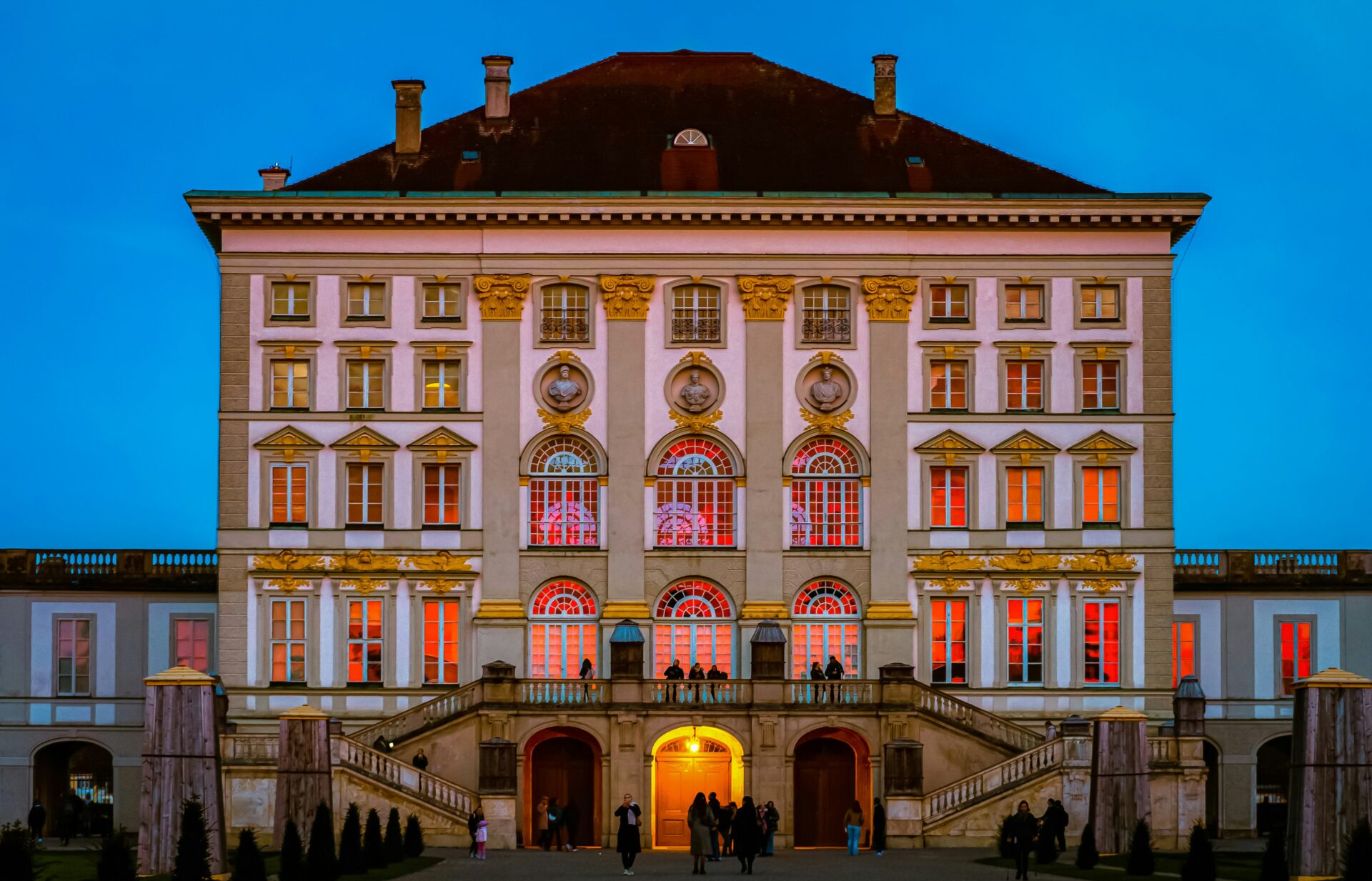
Around Nymphenburg: Nearby Attractions and Seasonal Highlights
Nymphenburg isn’t just a palace—it’s a whole district packed with things to check out. I wandered over to the Munich Botanical Garden right next door, where you’ll find thousands of plant species and these peaceful, slightly steamy glasshouses.
The garden opens daily except December 24. It’s honestly a calm spot to escape the city, no matter the season.
The palace park changes with the seasons, and that’s half the fun. In spring, flowers bloom along the canal.
Summer brings picnics and, if you’re up for it, gondola rides on the water (they do charge for that). Once winter hits, the gardens turn into a quiet, snowy landscape.
Fewer people show up in the colder months, and there’s this stillness that feels almost magical.
If you’re planning a day in Munich, it’s pretty easy to pair your palace visit with a trip to the Deutsches Museum. Or maybe you’d rather take a day trip out to fairytale spots like Neuschwanstein Castle.
Local cafes and bakeries around Nymphenburg offer cozy places to rest, grab a bite, and just soak in the royal atmosphere.

